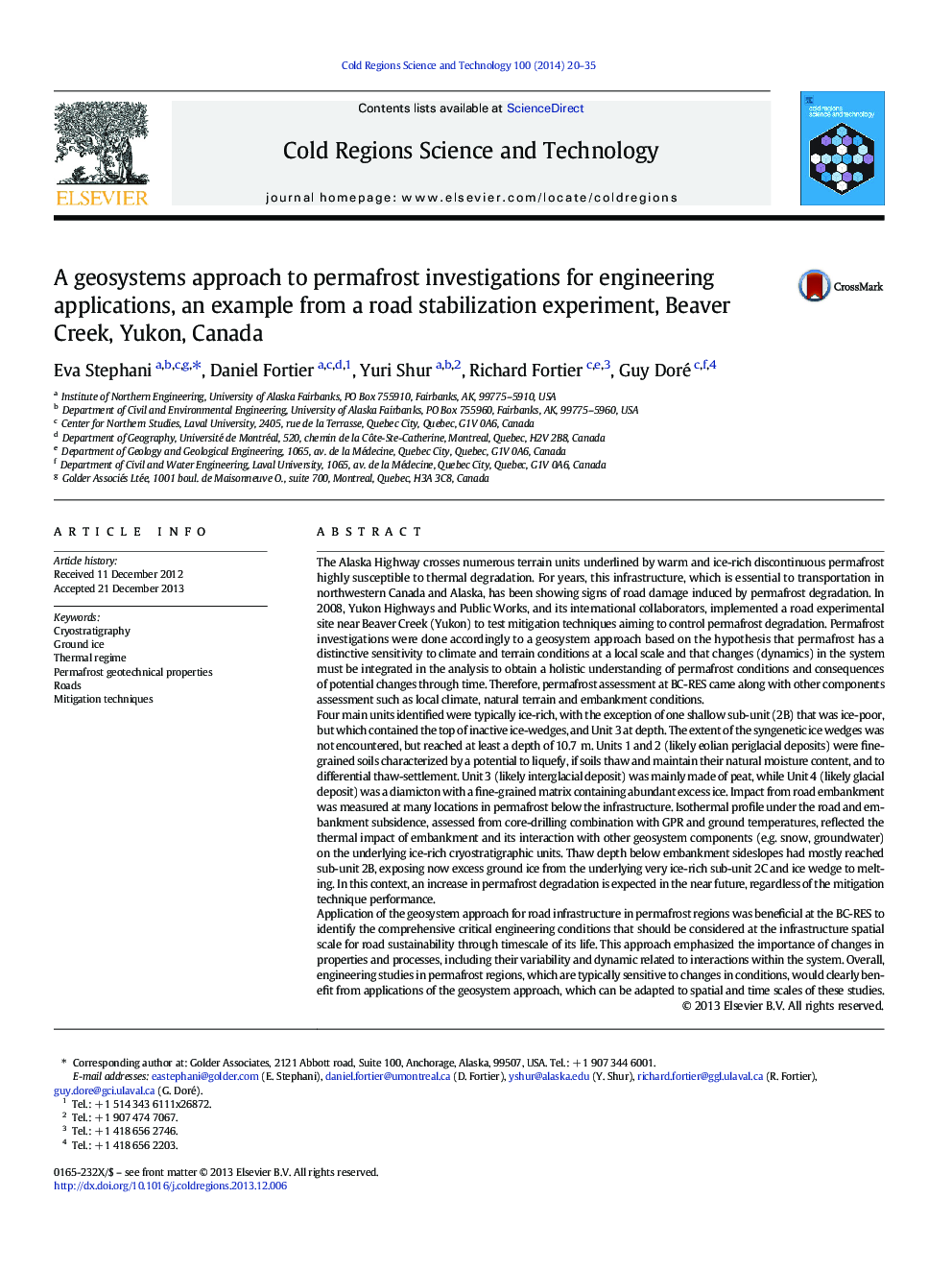| Article ID | Journal | Published Year | Pages | File Type |
|---|---|---|---|---|
| 4675733 | Cold Regions Science and Technology | 2014 | 16 Pages |
•Three main cryostratigraphic units observed that were overall typically ice-rich.•Ice-wedge network buried at ~ 2.5-m deep and reaching at least a depth of 11 m.•Isothermal profile under the embankment slightly below 0 °C•Significant risks of differential thaw-settlement•Road subsided into underlying thawing permafrost since construction in the 90s.
The Alaska Highway crosses numerous terrain units underlined by warm and ice-rich discontinuous permafrost highly susceptible to thermal degradation. For years, this infrastructure, which is essential to transportation in northwestern Canada and Alaska, has been showing signs of road damage induced by permafrost degradation. In 2008, Yukon Highways and Public Works, and its international collaborators, implemented a road experimental site near Beaver Creek (Yukon) to test mitigation techniques aiming to control permafrost degradation. Permafrost investigations were done accordingly to a geosystem approach based on the hypothesis that permafrost has a distinctive sensitivity to climate and terrain conditions at a local scale and that changes (dynamics) in the system must be integrated in the analysis to obtain a holistic understanding of permafrost conditions and consequences of potential changes through time. Therefore, permafrost assessment at BC-RES came along with other components assessment such as local climate, natural terrain and embankment conditions.Four main units identified were typically ice-rich, with the exception of one shallow sub-unit (2B) that was ice-poor, but which contained the top of inactive ice-wedges, and Unit 3 at depth. The extent of the syngenetic ice wedges was not encountered, but reached at least a depth of 10.7 m. Units 1 and 2 (likely eolian periglacial deposits) were fine-grained soils characterized by a potential to liquefy, if soils thaw and maintain their natural moisture content, and to differential thaw-settlement. Unit 3 (likely interglacial deposit) was mainly made of peat, while Unit 4 (likely glacial deposit) was a diamicton with a fine-grained matrix containing abundant excess ice. Impact from road embankment was measured at many locations in permafrost below the infrastructure. Isothermal profile under the road and embankment subsidence, assessed from core-drilling combination with GPR and ground temperatures, reflected the thermal impact of embankment and its interaction with other geosystem components (e.g. snow, groundwater) on the underlying ice-rich cryostratigraphic units. Thaw depth below embankment sideslopes had mostly reached sub-unit 2B, exposing now excess ground ice from the underlying very ice-rich sub-unit 2C and ice wedge to melting. In this context, an increase in permafrost degradation is expected in the near future, regardless of the mitigation technique performance.Application of the geosystem approach for road infrastructure in permafrost regions was beneficial at the BC-RES to identify the comprehensive critical engineering conditions that should be considered at the infrastructure spatial scale for road sustainability through timescale of its life. This approach emphasized the importance of changes in properties and processes, including their variability and dynamic related to interactions within the system. Overall, engineering studies in permafrost regions, which are typically sensitive to changes in conditions, would clearly benefit from applications of the geosystem approach, which can be adapted to spatial and time scales of these studies.
